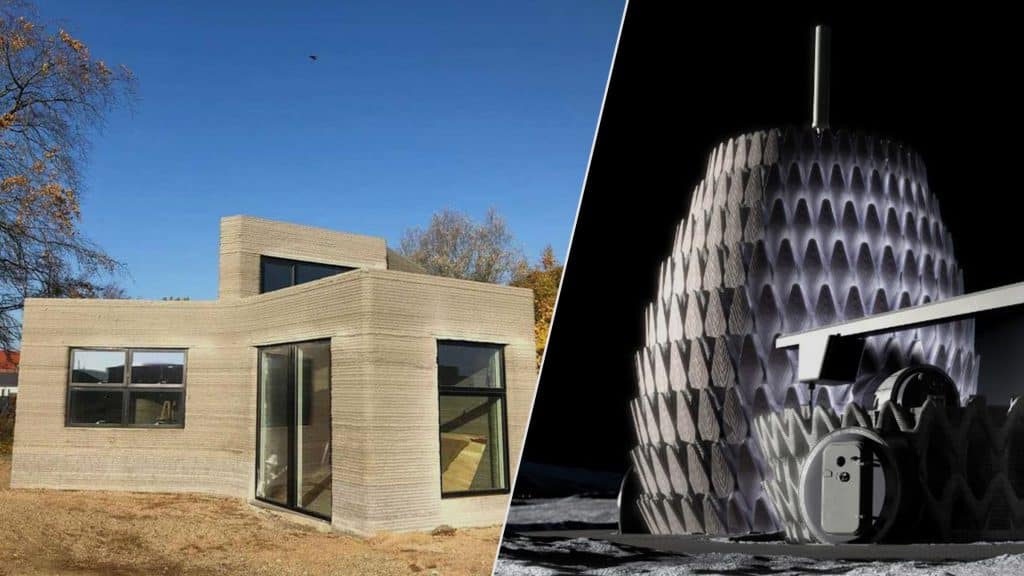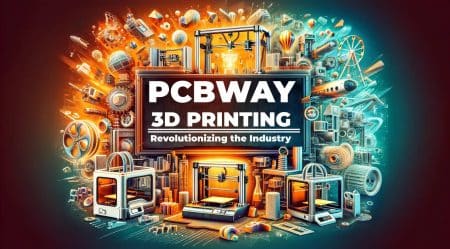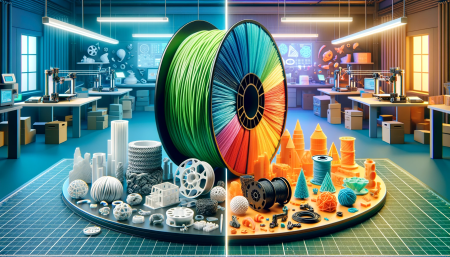Table of Contents
Which construction printers are the best for 3D printing a house?
Concrete 3D printing, often known as “Construction 4.0,” is a 3D printing technology comparable to FFF 3D printers. A construction 3D printer is a machine that can 3D print a house by layering a material (for example, concrete) on top of each other. To print buildings in 3D, a paste-type material, concrete or earth materials, is forced through a nozzle in layers.
Concrete 3D printing saves the building sector time, effort, and material compared to traditional construction processes. It’s worth noting that 3D printers can’t produce a fully working home.
Only the house’s structure and walls are constructed; other features such as windows, electricity, and plumbing must be installed later. Concrete 3D printers, on the other hand, can be used to create bridges, seats, and even simple outdoor decorations.
We’ve compiled a list of 12 house 3D printing options to provide you with a thorough picture of the construction 3D printer market. Some are commercially accessible 3D printers, while others are still in the prototype stage or are third-party construction 3D printing services.
How do you construct 3D printed houses?
Extrusion technology is used in home 3D printers. Some construction 3D printers (gantry style) resemble super-sized desktop FFF/FDM 3D printers, while others have a rotating mechanical arm.
In both circumstances, paste-type components, such as concrete, are employed as filaments. The material is pushed out through a specific nozzle to build layers.
Architects confront challenging competition when clients have many project options. Exploring 3D Printing might help architectural companies survive.
Showcase complicated designs in greater detail

A 3D printer is necessary for creating and examining delicate features like the façade or roof. These sophisticated and detailed features would be tough to design by hand, but 3D Printing online makes it easy.
This improves visual perception and helps clients visualize the features in real life. It might show shadows and sunlight to bring the model to life.
Experiment with different materials and colors
3D printer filaments let architects communicate their design’s feel. It reduces the work of painting or choosing colors for model regions.
Using glossy, white, or transparent materials adds beauty. It improves the model’s aesthetics and shows how the building will look in context.
Save 100 hours of overtime by drastically reducing manual labor

Hand-drawing a construction plan is a tedious, monotonous task that requires tenacity. Creating a conceptual model by hand can take days, depending on size and detail.
Manually building a model takes weeks. This is a considerable time investment for a single model; a 3D printer would cut it significantly.
The system eliminates the need for measuring, cutting, and bonding, allowing architects to focus on design.
Make several copies
The 3D print image can be preserved indefinitely for future reference. Given typical model-building procedures, the capacity to swiftly make replicas is rare.
This allows the architect to deliver a scale model to consumers and partners.
Verify design concepts quickly and easily
3D Printing allows developers to swiftly evaluate design concepts and produce prototypes. This enhances efficiency and helps programmers spot faults on Revit models.
Architects can create low-cost 3D architectural research models to analyze space flow, layout, volume, and natural light movement.
Changing the operational model’s size helps appraise the house’s surroundings (which can also be printed in 3D). How it fits with the neighborhood.
Construction with no waste

Almost a third of a country’s garbage is from construction. Although demolition sites are inefficient, construction sites are too. Costly and wasteful overordering is common.
Online 3D Printing minimizes waste. A 3D printer only uses the material needed to produce the construction. This could save millions.
Combine cutting-edge technology with tried-and-true methods.
3D Printing can replace traditional modeling; however, technology can be improved. Architects often design models from scratch; therefore, few designers choose to automate their workflow.
Architecture is considered an art; thus, the manual model building remains faithful to its roots. Hand-drawing complex geometric features may not be possible.
Adding 3D-printed elements to a handmade model creates a hybrid that conveys the notion in new ways.

What are the top firms for 3D printing a house?
| HOUSE 3D PRINTER | CATEGORY* | TYPE** | BUILD SIZE (M) | COUNTRY |
|---|---|---|---|---|
| BetAbram P1 | Available | Gantry system | 16 x 8.2 x 2.5 | Slovenia |
| COBOD BOD2 | Available | Gantry system | 14.62 x 50.52 x 8.14 | Denmark |
| MAXI PRINTER | Available | Robotic arm | 12.25 x 12.25 x 7 | France |
| CyBe Construction CyBe RC 3Dp | Available | Robotic arm | 2.75 x 2.75 x 2.75 | Netherlands |
| ICON Vulcan II | Available | Gantry system | 2.6 x 8.5 x ∞ | United States |
| MudBots 3D Concrete Printer | Available | Gantry system | 1.83 x 1.83 x 1.22 | United States |
| Total Kustom StroyBot 6.2 | Available | Gantry system | 10 x 15 x 6 | United States |
| WASP Crane WASP | Available | Delta system | Ø 6.3 x 3 | Italy |
| Apis Cor | Project | Robotic arm | 8.5 x 1.6 x 1.5 | Russia |
| Batiprint3D 3D printer | Project | Robotic arm | Up to 7m high | France |
| SQ4D – ARCS | Service | Gantry system | 9.1 x 4.4 x ∞ | United States |
| Contour Crafting | Service | Gantry system | – | United States |
| XtreeE | Service | Robotic arm | – | France |
Frequently Asked Questions: 3D Printing a House
What is a 3D-printed house?
A 3D-printed house is a structure built using additive manufacturing technology, where layers of material are deposited on top of each other to create the desired shape. It involves using large-scale 3D printers that can extrude concrete or other construction materials to create a house’s walls, floors, and other components. This method offers advantages such as reduced construction time, lower costs, and the ability to create unique designs.
How much does it cost to 3D print a home?
The cost of 3D printing a home can vary depending on several factors, such as the home’s size, the design’s complexity, the materials used, and the location. However, as a rough estimate, 3D printing a basic home can range from $10,000 to $40,000. It’s important to note that this estimate may not include additional costs such as land, permits, utilities, and finishing touches.
Where can I find 3D-printed houses to buy?
You can find 3D-printed houses for sale on the following websites:
1. Icon: https://www.iconbuild.com/
2. Mighty Buildings: https://www.mightybuildings.com/
3. Apis Cor: https://apis-cor.com/
4. SQ4D: https://sq4d.com/
Please note that availability and location may vary, so it’s recommended to check their websites for the most up-to-date information.
Is 3D printing concrete only for houses?
No, 3D printing with concrete is not limited to houses. It can be used for various applications, such as the construction of bridges, infrastructure, sculptures, and even custom furniture.
Have thoughts on the future of 3D printed homes? Share your insights in the comments below! And don’t miss out on the latest in 3D printing technology – subscribe to our newsletter now and stay ahead of the curve!






